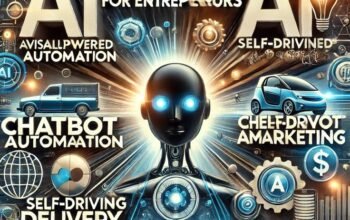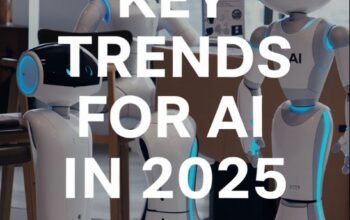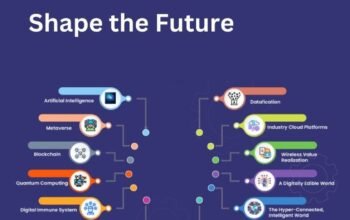The software industry has always been built on a predictable career ladder. Fresh graduates start as junior developers, learning the ropes through bug fixes and small feature implementations. They gradually work their way up to senior roles, mentoring the next generation while tackling increasingly complex architectural challenges. This ecosystem has sustained itself for decades, creating a natural pipeline of talent and knowledge transfer.
But something fundamental is shifting. Large language models and AI-powered coding assistants are demolishing the traditional entry points that have defined software careers. The simple, repetitive tasks that once served as training grounds for new developers are being automated away. This isn’t just changing how we write code—it’s threatening to break the entire progression system that the industry depends on.
The Vanishing Training Ground
Junior developers have historically cut their teeth on predictable work: fixing obvious bugs, writing basic CRUD operations, implementing straightforward UI components, and handling routine maintenance tasks. These assignments served a dual purpose. They delivered value to the business while providing safe spaces for newcomers to learn debugging, understand codebases, and develop professional habits.
AI coding assistants like GitHub Copilot, Tabnine, and Amazon CodeWhisperer excel at exactly these tasks. They can generate boilerplate code instantly, suggest fixes for common bugs, and even implement entire functions based on comments or function signatures. What once took a junior developer hours of careful work can now be accomplished in minutes with AI assistance.
This efficiency gain seems positive on the surface, but it creates a dangerous paradox. If AI can handle the work that traditionally trained new developers, where do beginners gain the foundational experience they need to advance? The industry risks creating a “missing middle” where junior positions become economically unviable, but senior roles still require deep expertise that can only come from years of hands-on experience.
Consider the typical debugging process that has educated generations of programmers. A junior developer encounters a mysterious error, spends hours tracing through stack traces, learns about system interactions, and eventually identifies the root cause. This process, while inefficient, builds crucial mental models about how software systems behave. When AI can diagnose and fix the same issue in seconds, that learning opportunity disappears.
Economic Pressures Accelerating the Shift
The economics are stark and getting starker. A junior developer in Silicon Valley costs a company roughly $120,000 annually in salary and benefits. An AI coding assistant subscription costs about $100 per month per user. Even accounting for the productivity differences, the math is compelling for companies focused on short-term efficiency.
Startups and cost-conscious organizations are already adapting their hiring strategies. Instead of hiring two junior developers and one senior to lead them, they’re hiring one senior developer augmented by AI tools. This approach seems rational from a quarterly perspective, but it creates systemic problems that compound over time.
The venture capital community is inadvertently accelerating this trend. Investors are pressuring startups to achieve more with smaller engineering teams, viewing AI-augmented productivity as a competitive advantage. Startups that can build products with fewer human developers are seen as more capital-efficient and scalable. This pressure filters down to hiring decisions, making junior positions increasingly difficult to justify.
The Skills Gap Paradox
As AI handles more routine coding tasks, the skills that define valuable software developers are shifting dramatically. Pattern recognition, system design thinking, and complex problem decomposition become more important than syntax memorization or boilerplate generation. But these higher-order skills are precisely what junior developers have traditionally learned through repetitive practice.
It’s similar to how GPS navigation affected spatial reasoning skills. When people stopped navigating manually, they also stopped developing the mental mapping abilities that made them good navigators in the first place. Software development faces a parallel risk: if new developers never wrestle with low-level implementation details, they may never develop the intuition needed for high-level architectural decisions.
The most valuable developers are becoming those who can effectively collaborate with AI tools—knowing when to trust AI suggestions, when to override them, and how to architect systems that humans and AI can work on together. But learning these meta-skills requires a foundation of understanding that comes from direct coding experience.
Institutional Knowledge and Mentorship Erosion
Software development has always been an apprenticeship profession. Junior developers don’t just learn technical skills; they absorb institutional knowledge, coding standards, debugging techniques, and professional judgment from more experienced colleagues. This knowledge transfer happens through code reviews, pair programming sessions, and collaborative problem-solving.
When companies eliminate junior positions, they also eliminate the mentorship opportunities that have traditionally helped senior developers grow into technical leaders. Mentoring forces experienced developers to articulate their decision-making processes, question their assumptions, and stay connected to different perspectives. Without junior developers to mentor, senior developers may become isolated in their expertise.
The loss goes beyond individual development. Teams lose the fresh perspectives that newcomers bring. Junior developers often ask naive questions that reveal hidden assumptions or point out unnecessary complexity that experienced developers have learned to ignore. They challenge established practices not from arrogance, but from genuine curiosity about why things work the way they do.
Alternative Pathways Emerging
Some companies are experimenting with modified career paths that account for AI’s capabilities. Instead of traditional junior roles focused on implementation, they’re creating positions focused on AI collaboration, system integration, and quality assurance of AI-generated code.
These roles require different skills from traditional programming positions. New developers need to understand AI limitations, develop prompt engineering techniques, and learn to verify and validate AI-generated solutions. They become AI operators rather than code implementers, focusing on directing AI tools toward business objectives.
Pair programming with AI is emerging as a potential training methodology. Instead of pairing junior and senior developers, some teams are having junior developers work alongside AI assistants while senior developers provide oversight and guidance. This approach allows newcomers to tackle more complex problems earlier while still providing learning opportunities.
Boot camps and coding schools are adapting their curricula to emphasize AI collaboration skills. Students learn to work with coding assistants from day one, developing habits around prompt crafting, code review, and AI-assisted debugging. This approach acknowledges that future developers will always work with AI tools, so training should incorporate this reality from the beginning.
The Innovation Risk
Perhaps the most concerning long-term risk is the potential impact on innovation. Breakthrough software innovations often come from developers who deeply understand both the possibilities and limitations of their tools. This understanding typically develops through years of hands-on experience with implementation details, performance constraints, and system behaviors.
If an entire generation of developers learns primarily through AI assistance, their mental models may be shaped more by AI’s patterns than by direct system understanding. This could lead to a form of innovation convergence, where solutions tend toward what AI assistants suggest rather than what creative human insight might discover.
The history of software innovation is full of solutions that violated conventional wisdom or exploited obscure system behaviors in creative ways. These innovations required developers who understood their tools at a granular level and could see possibilities that weren’t obvious from high-level abstractions.
Adapting the Industry Pipeline
The software industry needs to consciously redesign its career development pipeline to account for AI capabilities while preserving the essential learning experiences that create great developers.
One approach involves creating “AI-native” junior roles that focus on higher-level skills from the start. Instead of beginning with simple implementation tasks, new developers could start with system design, user experience optimization, and cross-functional collaboration. AI handles the routine implementation while humans focus on creative and strategic aspects.
Educational institutions need to rethink computer science curricula to emphasize skills that complement rather than compete with AI. This includes systems thinking, algorithm design, performance optimization, and human-computer interaction. Students need to understand not just how to code, but how to direct AI coding tools effectively.
Companies might need to accept lower short-term productivity in exchange for long-term talent pipeline sustainability. This could involve deliberately creating learning opportunities for new developers, even when AI could handle the same tasks more efficiently. The investment in human development pays dividends when those developers eventually become the senior engineers who can tackle problems AI cannot solve.
The Path Forward
The death of traditional junior developer roles isn’t necessarily catastrophic, but it requires intentional adaptation from the entire software industry. Companies that prioritize short-term AI efficiency at the expense of talent development may find themselves with innovation deficits in the long term.
The most successful organizations will likely be those that find ways to combine AI efficiency with human development. They’ll create new types of entry-level positions that focus on AI collaboration and system thinking rather than manual implementation. They’ll invest in mentorship programs that help experienced developers share knowledge in new formats. And they’ll recognize that the skills needed to work effectively with AI are themselves complex and valuable.
The software industry has survived major technological shifts before—from assembly language to high-level languages, from desktop to web to mobile. Each transition eliminated some roles while creating others. The AI transition will likely follow a similar pattern, but only if the industry consciously designs new pathways for talent development.
The question isn’t whether AI will change software careers—it already has. The question is whether the industry will adapt thoughtfully or allow critical talent development pipelines to break down through neglect. The choices made today will determine whether software development maintains its innovative edge or gradually converges toward AI-assisted mediocrity.



